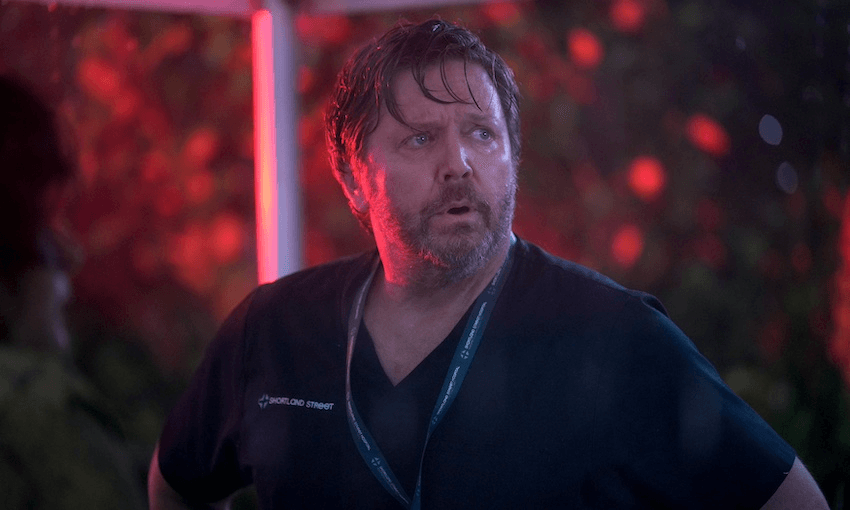Director and writer Paula Whetu Jones reveals how her own experience of paralysis led to the creation of brand new local comedy Spinal Destination.
Spinal Destination is a series, created and directed by me, that touches on a subject that is often overlooked in mainstream media – the grief, trauma, loss and confusion that comes after becoming paralysed by a spinal cord injury. It is unique in the way it puts spinal cord injuries front and centre, telling the very personal, brave and intimate stories of a few of us who all of a sudden become paralysed.
My own story goes something like this: One minute my life was great. My plans were all on track, I was working overseas, I knew who I was and why I was on this Earth, the planets were aligned. Then, next minute, I’m paralysed. Not with fear or angst, because that would be kind of cool, artistic, dramatic. No – paralysed with some unnamed, unknown, one in a million illness that took everything from the waist down.
That’s where I was at in February 2010, paralysed from the waist down by a freak autoimmune illness that no one really knew anything about. (I now know it’s called “idiopathic transverse myelitis which translates to “I don’t know why it happened – transverse myelitis”). I felt like I was in a really bad Big Brother experiment, and I had to try my best to “survive” mentally physically and emotionally.
I felt trapped and powerless in my new surroundings and I was trying to make sense of what happened to me. Because it made no sense at all. So I started a diary, because my life would be back to normal soon, but the days turned into weeks, which turned into months… and ultimately years. Right from the get go, I knew it was a story I wanted to tell, I just didn’t realise at the time it was going to be my story.
I was a documentary maker before I was paralysed, so why couldn’t I be one again? After a few dismissers and non-believers, I made my first documentary in Cambodia. I made a couple more but it took its toll on me physically. All the while I had this story, my diary, that I looked at and worked on, but it wasn’t until 10 years later that I had the courage to present it. Thomas Robbins from Sky saw something in it… he saw it had legs.
He partnered me up with production company Great Southern and, with funding from NZ on Air, Spinal Destination was reborn. John Landreth was the first person we cast. An incomplete tetraplegic, who was an actor in his previous life, Landreth found himself going for roles as “man in wheelchair” and missing out, despite being the only man in a chair who auditioned. He wrote his character, so it only made sense that he play it.
We then cast the fearless Bree Peters, who gave her audition piece everything she had, and then some, as Tessa Rivers. Tom Sainsbury was also on the writers table and wrote one of the scripts, and we wrote Dan with him in mind. Playing the annoying and sad Dan, he never failed to surprise us with his wit and charm. Oscar Phillips, who plays Ed, fully encapsulated the hopeful young man we had written.
Spinal Destination aims to humanise people in chairs. It’s not that we are not human – often we are just not anything, totally invisible. My aim is to be visible, both on screen and off. Two of our cast members, John Landreth and Chelsea Pita, are in chairs. I am in a chair as the creator, as is my intern, Johanna Meyer – not to mention a slew of extras. We are proof that the obstacles can be overcome, people just need to move them.
We had wheelchairs all over the set prior to filming and the crew were encouraged to blat around in them, to feel the fear and do it anyway. Visitors to the set had no idea who was actually in chairs and who wasn’t. It felt good to be the majority for a bit.
The biggest hurdle for me was coming to terms with how I saw myself. Paralysis can, and does, happen to anyone – I just never thought it would happen to me. Spinal Destination does not shy away from these harsh realities. While the characters all have paralysis in common, they are unique individuals with their personal lives, their relationships, their aspirations. That stuff doesn’t just stop because we are all sitting down.
Spinal Destination is a candid, graphic and explicit look at losing what most of us take for granted. It’s a dark comedy, bordering on gallows humour, in which a group of individuals with only one thing in common try to navigate new lives, new rules and new broken bodies in a world that so readily discards broken. It highlights our struggles, our triumphs, and our fears, which at times are mountainous.
Because we all know how hard it is to get up a mountain… especially in a wheelchair.
Spinal Destination airs Wednesday 8.30pm on Sky Open and comes to Sky Go & Neon March 28



